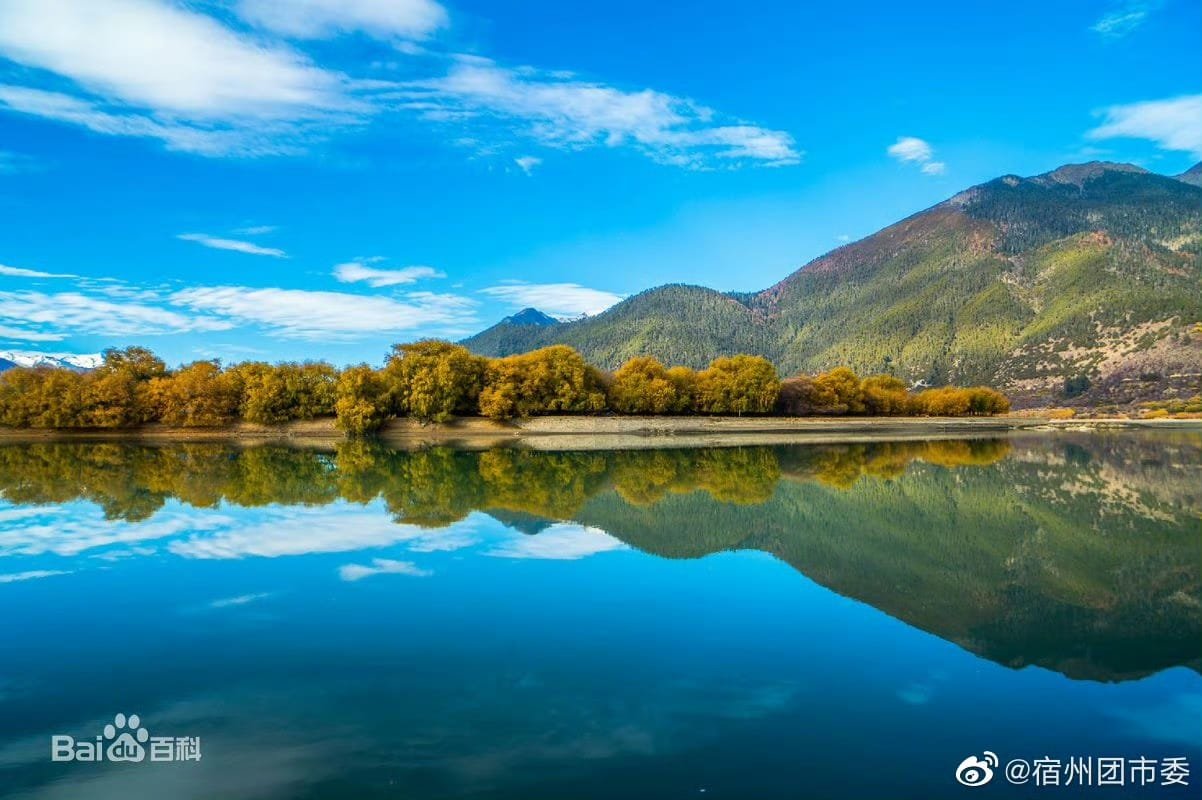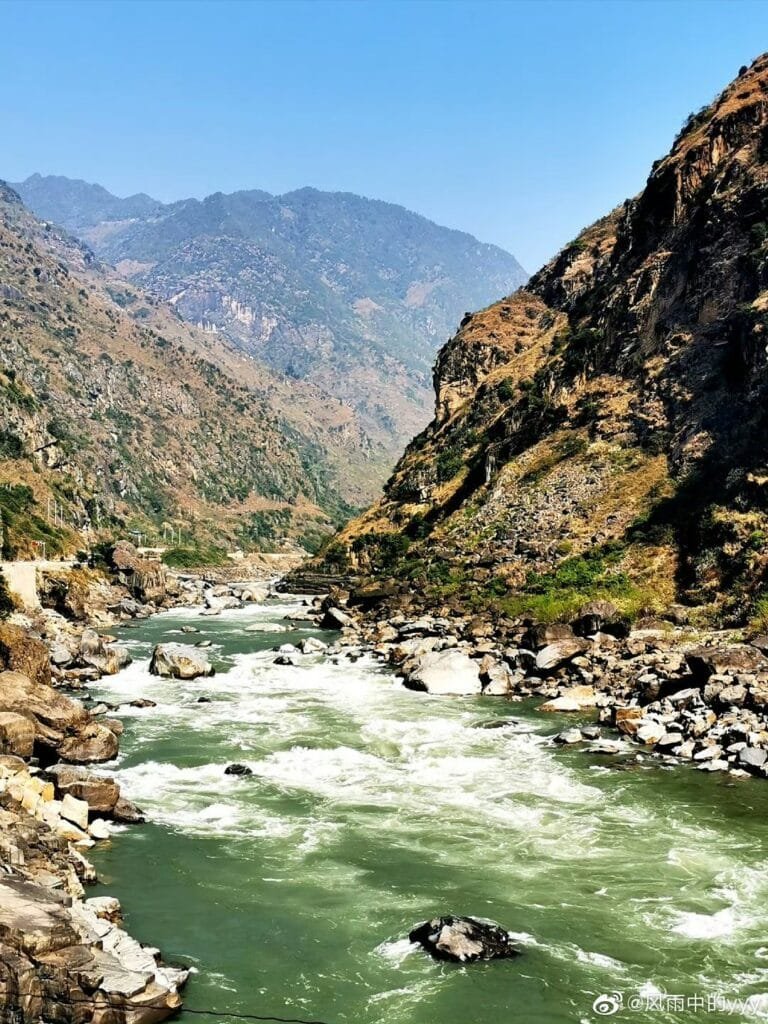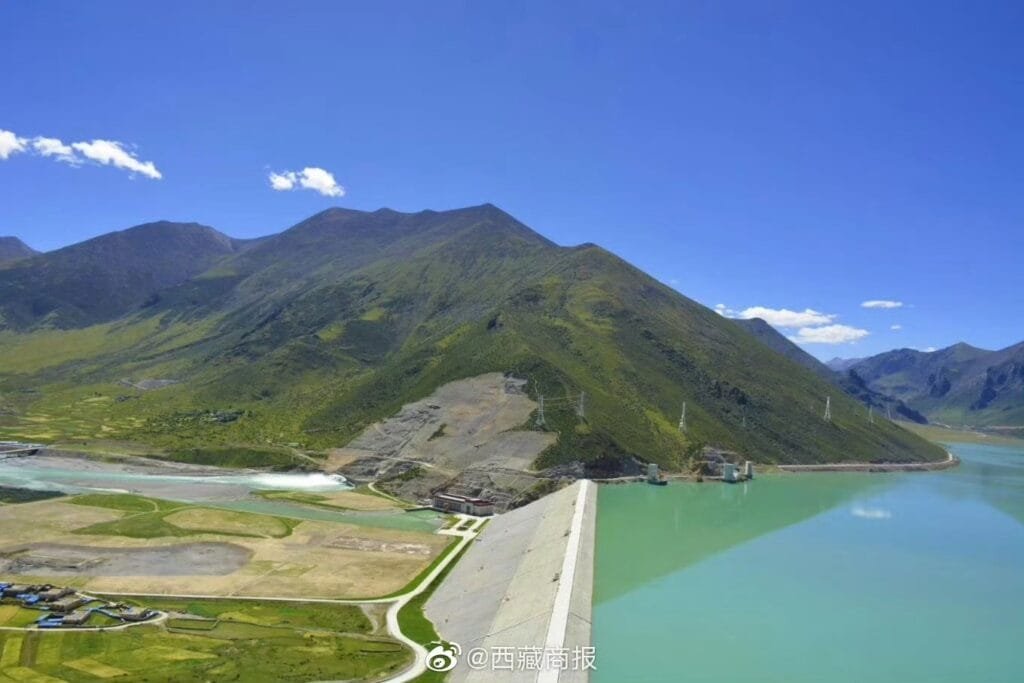
Introduction to the Yuchu River (Yuqu)
The Yuchu River (玉曲), གཡུ་ཆུ། also known as Yuqu, translates to “Shining River” in Tibetan. Flowing through Zogang County in Tibet’s Chamdo region, this pristine waterway plays a crucial role in the region’s ecology, economy, and culture. Eventually, it merges into the Nujiang River (怒江, Salween River) in Zayul County, making it an integral part of Tibet’s hydrological network.
Geographical Features of the Yuchu River
Location:
- Situated in southeastern Tibet, primarily flowing through Zogang County ( མཛོ་སྒང་རྫོང) and extending into Zayul County.
- Originates from the southern foot of Wahe Mountain near Busu Village, Mali Town, at the northeastern end of Luolong County.
Flow Direction:
- The river meanders southeast through various townships, including Guoqing, Yiqing, Zhongzhong, Bangda, Meiyu, Tiantuo, Wangda, Zhayu, and Bitu.
- It changes course westward after Mode Village, enters Chawalung Township in Zayul County, then turns sharply north near Zhagu Village before flowing southwest into the Nujiang River, southeast of Muba Village.
Length and Elevation:
- Spanning approximately 402 kilometers, the Yuchu River descends 3,012 meters from its source.
- The total drainage area covers 9,190 square kilometers, with around 80 square kilometers of glacier coverage.
Natural Resources and Biodiversity
The Yuchu River Basin is a rich ecological zone, home to diverse flora and fauna that contribute to Tibet’s environmental balance.
Forests and Vegetation:
- The basin is densely populated with spruce, fir, cypress, and Masson pine, essential for maintaining the region’s ecological stability.
- The fertile lands along the riverbanks support traditional Tibetan agriculture, particularly barley and wheat cultivation.
Aquatic Life:
- The river sustains various high-altitude aquatic species, including Gymnodiptychus (裸腹重唇鱼), a fish species adapted to Tibet’s cold waters.
Wildlife:
- The surrounding forests provide a habitat for numerous Tibetan wildlife species, making it a significant biodiversity hotspot.
Economic and Cultural Importance

Hydropower Potential:
- The Yuchu River has a theoretical hydropower reserve of approximately 2.51 million kilowatts.
- Planned hydropower projects include the construction of seven cascade hydropower stations: Chengde, Zhayu, Jideng, Zhongbo, Bitu, Zara, and Hongdong, utilizing a “two reservoirs and seven levels” development approach.
Agriculture and Forestry:
- The river sustains local Tibetan farmers by providing water for crops and supporting livestock grazing.
- Timber from the surrounding forests contributes to the local economy, ensuring sustainable resource utilization.
Cultural and Historical Significance:
- For centuries, the Yuchu River has been a lifeline for Tibetan nomads and farmers, shaping local traditions and ways of life.
- The river is deeply interwoven with Tibetan folklore and spiritual practices, revered for its pristine beauty and life-sustaining properties.
The Hidden Beauty of the Yuchu River
With its crystal-clear waters, dense forests, and breathtaking landscapes, the Yuchu River remains one of Tibet’s most mesmerizing natural wonders. Its high-altitude valleys, deep mountain gorges, and diverse terrain create a striking contrast, offering an unparalleled experience for nature lovers and adventurers alike.
Conclusion
The Yuchu River is more than just a waterway; it is a vital artery of life for Tibet’s environment, economy, and cultural heritage. As Tibet continues to modernize, efforts to balance ecological preservation with sustainable development are essential to protect this magnificent river for future generations. Whether for its natural beauty, rich biodiversity, or economic potential, the Yuchu River stands as a testament to Tibet’s unique and awe-inspiring landscape.

Environmental Impact Assessment of the Zhara Hydropower Station on the Yuqu River in Tibet: Implications for Endemic Fish Species
Overview of the Zhara Hydropower Station
The Zhara Hydropower Station is part of a seven-tier development plan along the lower reaches of the Yuqu River, also known as Weiqu. The river is a major tributary on the left bank of the Nu River (Salween) and is home to unique fish species, including the Nujiang schizothoracin (Schizothorax nukiangensis), Gongshan schizothoracin (Schizothorax gongshanensis), and Gongshan catfish (Glyptosternon maculatum).
Environmental Impact Assessment (EIA) and Public Notification
The Ministry of Ecology and Environment of China recently accepted the environmental impact assessment (EIA) report for the Zhara Hydropower Station project and published it for public review from April 13 to April 26, 2018. The report highlights that the project area is classified as an ecologically significant biodiversity conservation zone in southeastern Tibet.
Geographic and Hydrological Features of the Yuqu River
The Yuqu River originates from the eastern slopes of Wahe Mountain in Lhünzê County, Chamdo Prefecture, at an elevation of approximately 4,954 meters. It flows southeastward through counties including Lhorong, Chaya, Baxoi, and Zogang in Chamdo, before entering Chayu County in Nyingchi Prefecture, where it merges into the Nu River near Muba Village in Chawalong Township.
The Zhara Hydropower Station is the sixth-tier project in a seven-stage development plan along the Yuqu River. The dam site is located near Zhalang Village, Bituo Township, covering a watershed area of 8,546 km². The station has an average annual runoff of 3.48 billion cubic meters, a normal reservoir storage level of 2,815 meters, and a total installed capacity of 1,015 MW, generating an annual output of approximately 4.071 billion kWh.
Impact on Fish Populations and Aquatic Ecosystem
The EIA report identifies 14 fish species in the project area, including three endemic species of the Nu River basin. Additionally, the Tibetan loach (Triplophysa tibetana) is recorded as a newly identified species in the Nu River system in Tibet.
Threats to Endemic Fish Species
- Habitat Fragmentation: The construction of the Zhara dam will create a barrier, disrupting the natural migratory routes of fish, particularly for species that rely on seasonal upstream movements for spawning.
- Altered Hydrology: The transformation of a free-flowing river into a reservoir will change water flow patterns, converting rapids into slow-moving or stagnant water. This shift could negatively impact species adapted to fast-flowing environments while favoring those suited to still waters.
- Impact on Spawning Grounds: The EIA suggests that while the impact on schizothoracin spawning grounds will be limited, certain fish species may need to relocate downstream or to the main Nu River channel to find suitable breeding habitats.
Conservation Measures and Mitigation Strategies
To counteract the negative impacts, the project includes ecological conservation efforts such as:
- Establishing fish migration facilities
- Implementing artificial fish breeding and restocking programs
- Protecting natural aquatic habitats
Future Hydropower Development on the Yuqu River
The EIA report outlines a broader hydropower development strategy for the Yuqu River. As of December 2009, the National Hydropower Planning and Design Institute, in collaboration with the Tibet Autonomous Region Development and Reform Commission, approved the Yuqu River Hydropower Development Plan. The plan includes the construction of seven hydropower stations:
- Chengde (3,760m)
- Zhanyu (3,550m)
- Jideng (3,400m)
- Zhongbo (3,200m)
- Bituo (3,080m)
- Zhara (2,810m)
- Hongdong (2,100m)
The upper 219.5 km of the Yuqu River will remain in its natural state without hydropower development to preserve ecological balance.
Socioeconomic Benefits of Hydropower Development
According to the EIA report, the implementation of the hydropower plan will:
- Provide a stable electricity supply to eastern Tibet
- Support the “West-East Power Transmission” initiative
- Improve regional infrastructure, transportation, and tourism
- Generate employment and boost local economies
- Reduce reliance on coal-fired power plants, lowering environmental pollution
Environmental Concerns and Challenges
Despite the benefits, the project poses challenges, including:
- Displacement of local communities due to reservoir flooding
- Changes in water quality and sediment transport
- Potential negative effects on aquatic and terrestrial biodiversity
However, the report emphasizes that these adverse effects can be mitigated through proper environmental management and conservation measures.
Conclusion
The Zhara Hydropower Station and the broader Yuqu River hydropower plan aim to enhance Tibet’s energy security and economic development. However, careful management is required to minimize the ecological impact, particularly concerning endemic fish species and local biodiversity. Balancing energy needs with environmental protection will be crucial for sustainable development in the region.


